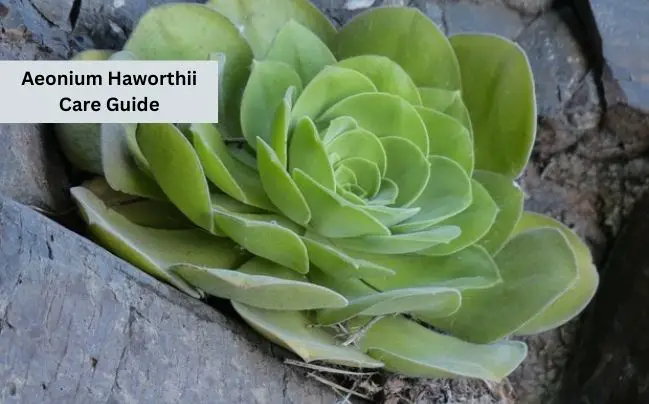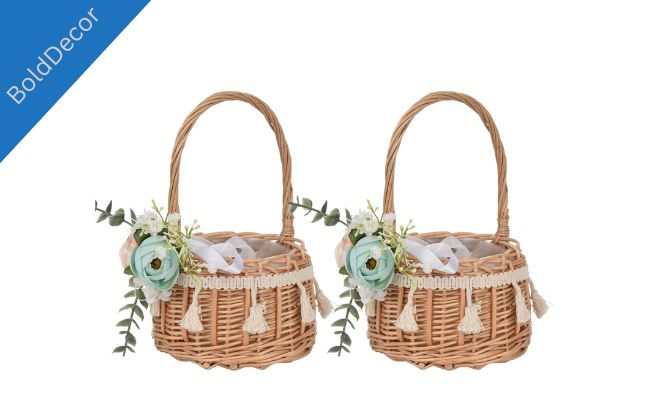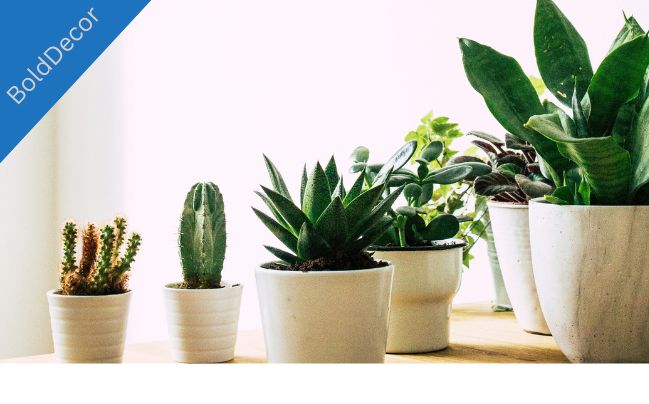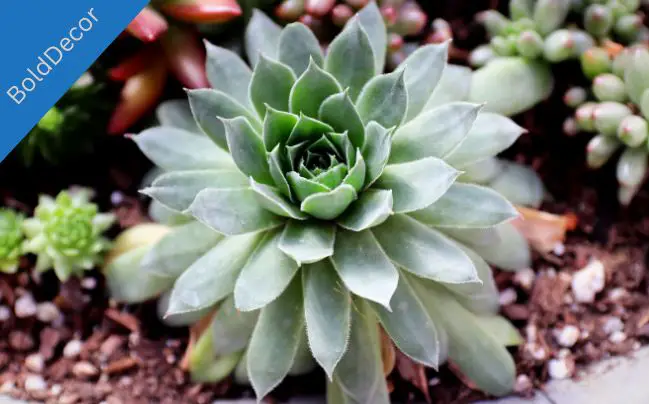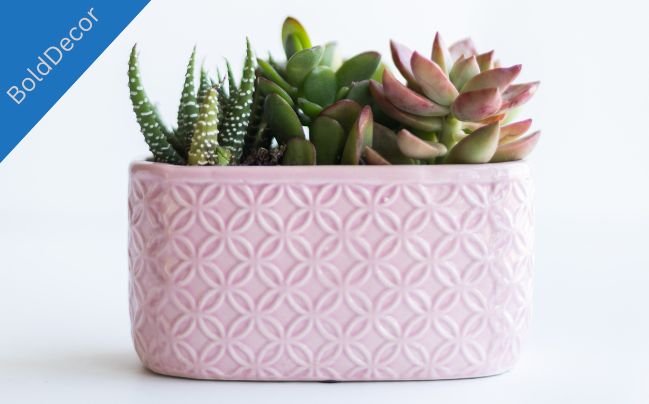Aeonium haworthii is a stunning succulent that can add natural beauty to any garden or indoor space. However, to ensure that your aeonium haworthii plants remain healthy and vibrant, they require specific care practices.
In this blogpost, we will discuss some essential tips to help your aeonium haworthii thrive.
Key Takeaways:
- Proper sunlight exposure is crucial for aeonium haworthii.
- Adequate watering practices balance between not over or underwatering the plant.
- Well-draining soil with sufficient amendments are required for optimal growth.
- A consistent temperature level, avoiding frost or extremely high heat, is essential.
- Regular pruning, maintenance, and targeted pest control can help promote overall plant health.
Table of Contents
Aeonium Haworthii
Before we dive into caring for aeonium haworthii succulents, let’s understand what they are. With its dramatic rosette-shaped leaves, aeonium haworthii is a stunning succulent that has become a popular choice for both indoor and outdoor gardens.
Also known as the desert rose or black rose, aeonium haworthii is an architectural wonder that can be grown in a variety of conditions, making it an ideal plant for beginners and seasoned gardeners. Its unique shape and gorgeous colors attribute to its popularity.
So, whether you’re a succulent enthusiast or a beginner looking to add some greenery to your space, aeonium haworthii is a beautiful choice.
Optimal Sunlight Exposure for Aeonium Haworthii
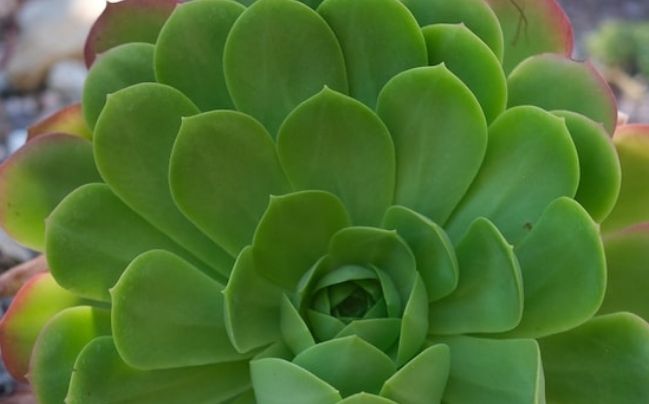
Aeonium haworthii, a stunning succulent also known as desert rose or black rose, thrives in bright, indirect sunlight. Direct sunlight can burn the leaves, so it’s essential to provide partial shade, particularly during the hottest part of the day if growing them outdoors. The amount of light required depends on the variety of aeonium plant being grown. Different aeonium haworthii varieties require varying levels of sunlight to bloom to their full potential.
Aeonium Haworthii Outdoor Care
If you are growing aeonium haworthii outdoors, you can achieve optimal growth by placing the plant in a location that receives bright light in the morning or late afternoon and partial shade during the midday heat. If cultivating your plants indoors, remember to place them in a well-lit area, such as a south-facing window, where they receive indirect sunlight throughout the day.
Aeonium Haworthii Varieties
One of the most exciting aspects of aeonium haworthii is the sheer variety of their species, each with its own unique requirements for optimal growth. A few popular varieties include:
| Variety | Light Requirements |
|---|---|
| Aeonium arboreum ‘Schwarzkopf’ | Full Sun |
| Aeonium urbicum | Partial Sun |
| Aeonium ‘Cyclops’ | Partial Sun to Light Shade |
| Aeonium haworthii ‘Kiwi’ | Partial Sun |
As seen in the table above, different aeonium haworthii varieties require different levels of light exposure. So, when selecting your aeonium haworthii plant and deciding on its placement, consider the amount of sunlight the particular species needs. Proper sunlight exposure will help your plants’ growth and overall health.
Watering Practices for Aeonium Haworthii
Aeonium haworthii is a drought-tolerant plant, meaning it can survive periods of low water availability. Nevertheless, regular watering is still necessary for these succulents to thrive. Watering them correctly can be tricky but essential since inadequate watering can lead to undernourished, stunted, or diseased plants. Conversely, overwatering can be detrimental, leading to root rot and other issues. We will provide general aeonium haworthii watering tips to help you keep your plant healthy and hydrated.
General Watering Guidelines
Regular watering keeps aeonium haworthii succulents healthy and thriving. The ideal watering schedule depends on several factors, such as seasonal changes, plant size, and pot size. Typically, you should water your plant once every one to two weeks. However, different varieties may require different watering frequency, so make sure to research your species.
Before watering your aeonium haworthii, check the soil’s moisture content to determine whether the plant needs water. The top inch of the soil must be completely dry to indicate that it’s time to water. If the soil still feels damp or moist, wait a day or two before watering again.
When watering your plant, water it until the soil is moist but not saturated. Overwatering can lead to root rot, a fungal disease that affects the roots, causing them to wither and die. Water-saturated soil can also create an ideal environment for pests and diseases to thrive.
It’s best to water your aeonium haworthii plants in the morning to ensure that the plant has ample time to absorb the moisture before nighttime. Nighttime moisture can attract pests and cause the leaves to rot.
Ideal Watering Methods
Aeonium haworthii requires deep watering to promote healthy root growth and help the plant thrive. Here are some ideal watering methods:
- Bottom Watering: Submerge your pot in a container filled with water and let the water soak up through the bottom of the pot. Place a weight on top of the pot to keep it submerged. Wait for fifteen to twenty minutes, then remove the pot from the water.
- Slow and Steady Watering: Water slowly and consistently around the base of the plant, letting the water soak in gradually.
Frequent misting can also supplement aeonium haworthii’s water intake. Misting can be ideal for indoor plants, providing extra humidity that promotes optimal growth. Misting should not be the only watering method, but it can help keep your plant healthy and hydrated.
Soil Requirements for Aeonium Haworthii
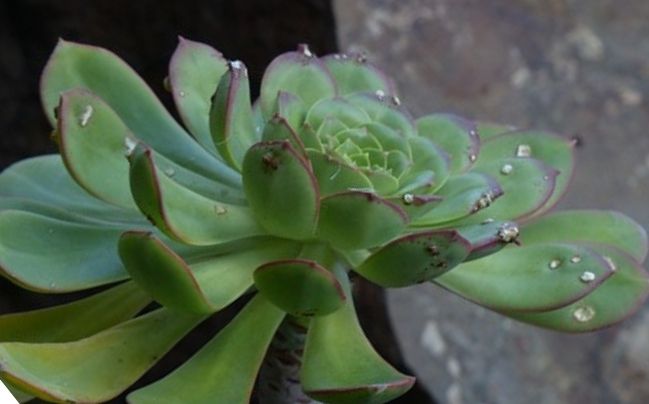
Proper soil composition is crucial for the health and well-being of aeonium haworthii plants. These succulents prefer well-draining soil that allows excess water to escape easily, preventing root rot and other issues.
Aeonium haworthii thrives in a light, porous potting mix that is low in organic matter. It is best to use a cactus mix or a mixture of coarse sand, perlite, and peat moss.
When repotting, use a well-draining container that is slightly larger than the current pot and has adequate drainage holes.
| Soil Requirements for Aeonium Haworthii: | Recommendations: |
|---|---|
| Light and Porous Mix | Cactus Mix, Coarse Sand, Perlite, Peat Moss |
| Well-Draining Container | Slightly Larger than Current Pot, Adequate Drainage Holes |
By providing the appropriate soil composition, you can ensure your aeonium haworthii plants have the foundation they need to thrive.
Temperature and Humidity Considerations
When it comes to aeonium haworthii care, temperature and humidity are important elements to consider. These plants prefer mild temperatures ranging from 70°F to 80°F (21°C to 27°C). While they can tolerate slightly lower temperatures, frost or extremely high heat can harm the plant.
Moreover, if you plan to grow aeonium haworthii indoors, it’s essential to monitor the humidity levels as well. Indoor environments can have varying humidity levels that may impact the plant’s health. It’s best to keep the humidity level around 40% to 60% to ensure your aeonium haworthii remains healthy and vibrant.
Propagating Aeonium Haworthii
Expanding your plant collection can be costly, but propagating aeonium haworthii is an affordable and rewarding option. This section will guide you through the different propagation methods, including leaf cuttings and stem cuttings, to help you grow new plants from your existing aeonium haworthii.
Leaf Cuttings
Leaf cuttings involve removing a healthy leaf from the parent plant and allowing it to root and grow a new plant. Choose a mature leaf from the center of the rosette with no damage or blemishes. Insert the cut end into well-draining soil and wait for roots to develop before watering.
Stem Cuttings
Stem cuttings involve removing a healthy stem from the parent plant and propagating it in soil. Select a stem with no damage or blemishes and cut it into several pieces that are 3-4 inches long. Allow the cuttings to dry for a few days before planting them in well-draining soil.
Varieties
Propagation techniques can vary slightly depending on the aeonium haworthii varieties you’re propagating. For example, some varieties root more easily from leaves, while others prefer stem cuttings. It’s also important to note that some aeonium haworthii varieties propagate more successfully than others.
| Variety | Propagation Method | Success Rate |
|---|---|---|
| Black Rose | Leaf cuttings | High |
| Desert Rose | Stem cuttings | Medium |
| Garnet | Stem cuttings | Low |
Regardless of the variety, propagating aeonium haworthii requires patience and attention to detail. Be sure to follow proper care practices, including providing the right soil type, sunlight exposure, and watering frequency, to ensure successful propagation and the growth of healthy new plants.
Pruning and Maintenance Tips
Regular pruning and maintenance are essential for keeping your aeonium haworthii plants looking their best. Here are some tips to help you keep your plants healthy:
When to Prune
The best time to prune aeonium haworthii is in the spring or summer when the plant is actively growing. Avoid pruning during the winter or fall, as this can stress the plant and slow its growth.
How to Prune
To prune your aeonium haworthii, use a sharp, sterilized pair of shears to remove dead, damaged or diseased leaves. You can also prune to shape the plant, removing any leggy growth or trimming back the rosettes to manage the plant’s size.
General Maintenance
- Monitor your plant’s soil moisture regularly, and ensure it’s not sitting in water.
- Remove any debris or fallen leaves from the plant’s base to prevent the accumulation of rot-promoting materials.
- Fertilize your aeonium haworthii during the growing season (spring and summer) with a balanced, water-soluble fertilizer.
- Inspect your plant regularly for signs of pests or diseases and take prompt action.
Following these pruning and maintenance tips will help ensure your aeonium haworthii remains healthy and vibrant.
Common Pests and Diseases
Despite their hardy nature, aeonium haworthii is not immune to pests and diseases. The following are some of the pests that aeonium haworthii is most vulnerable to:
| Pest | Signs of Infestation | Treatment |
|---|---|---|
| Mealybugs | White, cotton-like spots on leaves and stem | Manually remove bugs and apply insecticidal soap |
| Aphids | Tiny, pear-shaped insects that cluster on leaves | Apply insecticidal soap or a neem oil solution |
| Spider mites | Yellowing leaves and webbing on plant | Use insecticidal soap or a spider mite treatment spray |
Prevention is key to managing pests. Regularly inspect your plants for signs of infestation, and quickly address any issues. Additionally, ensure that your aeonium haworthii is receiving the proper care, including the right amount of water and sunlight, as healthy plants are less susceptible to pest infestations.
Common diseases that may impact aeonium haworthii include root rot and powdery mildew. Root rot is caused by overwatering and can lead to yellowing of leaves and wilting. To address root rot, remove the damaged roots and repot the plant in fresh, well-draining soil. Powdery mildew appears as a white or gray coating on leaves and can be treated with a fungicide. Proper care practices, including watering and pruning, can prevent diseases from taking hold and help keep your aeonium haworthii healthy and happy.
Aeonium Haworthii as Indoor Plants
While aeonium haworthii is often grown outdoors, these succulents can also thrive as indoor plants, making them a popular choice for those who enjoy growing houseplants. However, it’s essential to keep in mind that growing aeonium haworthii indoors requires some special considerations to ensure their health and success.
To grow aeonium haworthii successfully indoors, ensure they receive several hours of bright, indirect sunlight daily, ideally near a south or west-facing window. Supplemental artificial lighting can also be used if natural light is scarce.
Like outdoor plants, proper aeonium haworthii care involves providing the right amount of water, good soil drainage, and the ideal temperature and humidity conditions. When watering your indoor aeonium haworthii plant, allow the soil to dry out fully between waterings to avoid overwatering. It’s essential to choose a well-draining soil mix specifically formulated for cacti and succulents, providing the necessary nutrients and drainage for healthy growth.
Indoor environments can also have different humidity levels than outdoor environments, which can impact the overall health of your aeonium haworthii. Low humidity levels can cause leaves to dry out and brown, while high humidity can lead to root rot and disease. To maintain optimal humidity, consider using a humidifier or placing a tray of water near your plants to increase moisture levels in the air.
Aeonium Haworthii Varieties
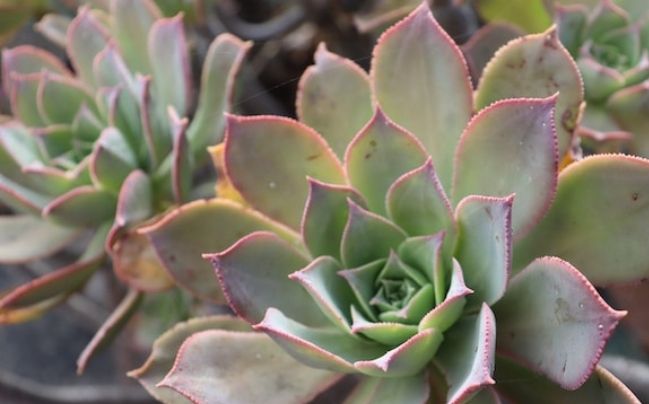
Aeonium haworthii is a stunning succulent that comes in various breathtaking varieties, each with its unique characteristics. Let’s take a look at some of the most popular aeonium haworthii varieties and their specific care requirements.
| Variety | Description | Care Requirements |
|---|---|---|
| Black Rose | One of the most striking aeonium haworthii varieties, with rosettes that resemble black flowers. The leaves are almost black, with a green center that becomes more prominent in bright light. | Requires bright, filtered sunlight and well-draining soil. Protect from direct, intense sunlight to prevent sunburn. Water sparingly, as roots are prone to rot. |
| Desert Rose | A stunning aeonium haworthii variety with dusty pink and green foliage that grows in tight rosettes. In bright light, the rosettes can turn almost completely pink. | Requires bright, filtered sunlight and well-draining soil. Avoid overwatering, as soil should dry out completely between waterings. Tolerates mild frost but should be protected from harsh winters. |
| Kiwi | A unique aeonium haworthii variety with variegated leaves that feature creamy yellow margins and green centers. In bright sunlight, the leaves turn pink and red. | Needs bright, indirect sunlight and well-draining soil. Water moderately, allowing the top layer of soil to dry between waterings. Avoid extreme temperature changes. |
| Zwartkop | One of the most sought-after aeonium haworthii varieties, with dark purple, almost black foliage. In bright sunlight, the leaves can turn almost entirely black. | Requires bright, filtered sunlight and porous, well-draining soil. Water sparingly, as overwatering can lead to root rot. Best grown in temperatures between 60°F to 75°F (15°C to 24°C). |
Whatever aeonium haworthii variety you choose, remember to provide adequate sunlight, well-draining soil, and proper watering practices to keep your plants healthy and vibrant.
Bottom line
Now that you have a comprehensive understanding of aeonium haworthii care, you can confidently nurture these beautiful succulents. Remember to provide them with optimal sunlight exposure, well-draining soil, and proper watering practices. Regular maintenance, pruning, and propagation can also help keep your plants healthy and thriving.
Whether you choose to grow aeonium haworthii indoors or outdoors, these stunning plants are sure to be a source of beauty and delight. With their unique rosette-shaped leaves and architectural growth habit, they make an excellent addition to any succulent collection. By following the tips and recommendations provided in this article, you can enjoy the beauty of aeonium haworthii for years to come.
FAQ
How often should I water my aeonium haworthii?
Aeonium haworthii plants should be watered deeply but infrequently. Allow the soil to dry out completely between waterings and then thoroughly saturate the soil, ensuring excess water drains out of the pot. In general, aim to water your aeonium haworthii every 7-10 days, adjusting based on environmental factors such as temperature and humidity.
Can aeonium haworthii be grown indoors?
Yes, aeonium haworthii can be grown indoors successfully. However, it is important to place the plant in a location that receives bright, indirect sunlight. South or west-facing windows are ideal. Rotate the plant periodically to ensure even growth and consider supplementing with a grow light if needed.
How do I propagate aeonium haworthii?
Aeonium haworthii can be propagated through leaf cuttings or stem cuttings. For leaf propagation, gently remove a healthy leaf from the parent plant, allow it to callus over for a few days, and then plant it in well-draining soil. Stem cuttings can be taken from the main stem of the plant, allowed to callus over, and then planted in soil.
What is the best soil mix for aeonium haworthii?
Aeonium haworthii thrives in well-draining soil. A recommended soil mix consists of equal parts potting soil, perlite, and coarse sand. This combination allows excess water to drain away from the roots to prevent rot and provides the necessary aeration for healthy root growth.
How should I care for aeonium haworthii during winter?
During winter, aeonium haworthii is somewhat dormant and requires less water. Reduce watering frequency to once every two to three weeks, allowing the soil to partially dry out between waterings. Additionally, ensure the plant is protected from freezing temperatures or frost by bringing it indoors or providing a frost cover.

